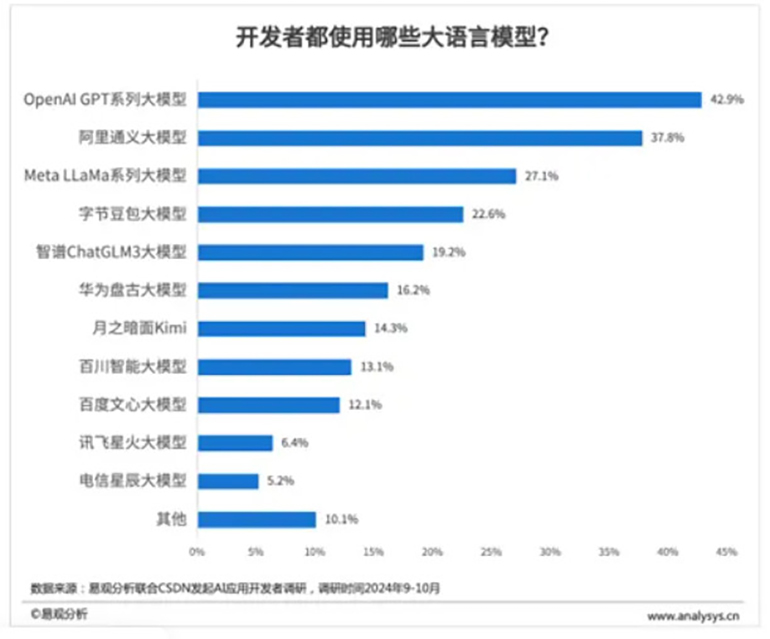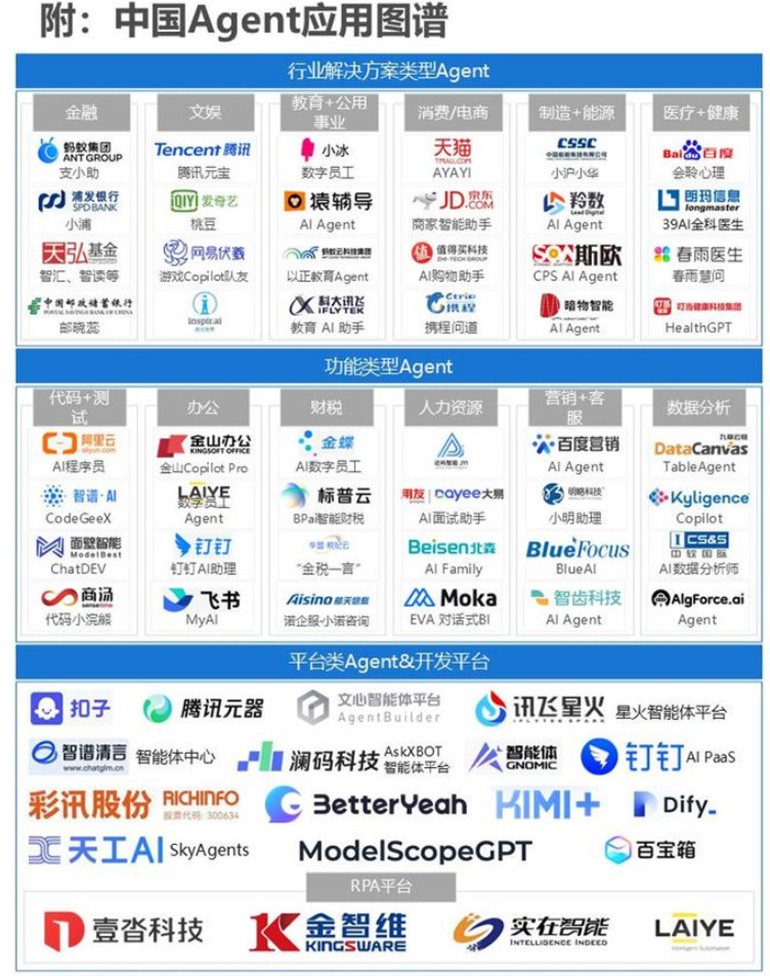Analysys Report: Ten Major AI Industry Trends for 2025
Analysys recently released the "2025 AI Industry Development Trends Report," highlighting ten significant trends across three dimensions:
●The challenging yet promising path toward AGI with continuous technological advancements accelerating industrial applications.
●Diversified exploration of application scenarios taking initial shape.
●Businesses embracing AI at an accelerating pace while rationally weighing ROI.
Ten Major Trends
1. Self-Play RL Paradigm and the Advancement of Large Models in Complex Reasoning
The release of GPT-3 by OpenAI set the stage for the explosive development of large language models (LLMs), significantly enhancing understanding, generation, and generalization capabilities. This has fueled high expectations for AGI. Both open-source and proprietary models are thriving, with China’s leading models, like Alibaba’s Tongyi, making substantial progress.

Figure 1. The proportion of large language models used by developers
2. Multimodal Models Advancing Towards Unified Understanding and Generation
Significant strides have been made in understanding and generating content across modalities such as text, audio, and video. Innovations in model design, cross-modal interaction, and performance optimization have led to the emergence of powerful multimodal applications.
2.1 New Models: The Emu3 model from Beijing Academy of AI integrates image, text, and video through autoregressive techniques.
2.2 Training Optimization: Innovative joint training strategies improve model efficiency and accuracy.
2.3 Cross-Modal Interactivity: Enhanced capabilities in converting between modalities, such as generating high-quality images from textual descriptions.
2.4 Performance Enhancements: Optimized structure and methods significantly improve task accuracy across domains like NLP, image processing, and speech recognition.
3. Agents Evolving into Superintelligent Entities
With advances in deep learning, reinforcement learning, NLP, and multimodal fusion, agents are evolving into superintelligent systems capable of handling complex tasks with superior reasoning and learning capabilities.

Figure 3 China Agent Application Map
4. AI-Native Applications Closing Service Loops
AI-native applications differ from traditional ones by being responsible for the end results, thus requiring higher user satisfaction. For instance, in AI-generated image applications, the core evaluation lies in meeting user expectations for output quality.
5. Mature Applications Integrating AI to Enhance Competitiveness
Adopting AI is now essential for mature applications. Organizations are leveraging LLM capabilities to enhance user experience, operational efficiency, and overall competitiveness.
6. AI Accelerating Content IP Development and Diversification
Generative AI is revolutionizing content IP ecosystems by expediting content creation and operational cycles. It helps extend IP lifecycles through derivative content like spin-offs or character merchandise, boosting commercial value.
7. AI-Powered Hardware Bridging the Physical and Digital Worlds
The integration of AI into hardware enables devices to perceive and interact with their environment, leading to transformative applications in education, workplace productivity, and daily life.
8. AI Empowering Industries with Domain-Specific Models
Industry-specific "small" models are driving intelligent chains by automating operations, optimizing decisions, and enabling new business models.
9. Enterprise AI Diffusion and Tailored Insights
General-purpose LLMs lower the barrier for enterprises to adopt AI by reducing the need for extensive R&D. Businesses can fine-tune these models to integrate AI capabilities into workflows quickly, enabling more widespread and equitable AI access.
10. AI Driving Organizational Transformation
AI adoption demands new organizational capabilities to support human-machine collaboration. Enterprises must develop management frameworks that align with AI-enhanced workflows to remain competitive in the evolving landscape.
Application Example
Weathink’s AI SOM, based on the Rockchip RK3568 processor with 1 TOPS computing power and a quad-core ARM Cortex-A55 CPU, balances performance with low power consumption. It supports various industry-specific models across diverse sectors.
WTC-RK3568S SOM:https://www.weathink.com/products/hexinban/13.html






